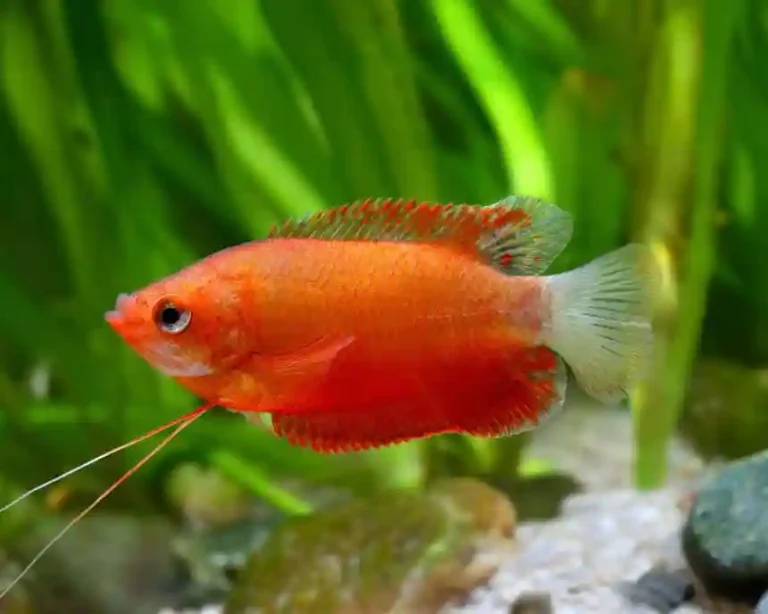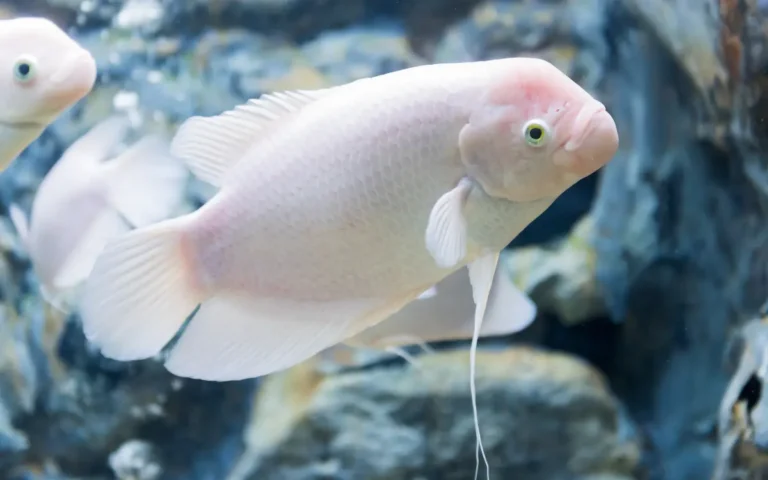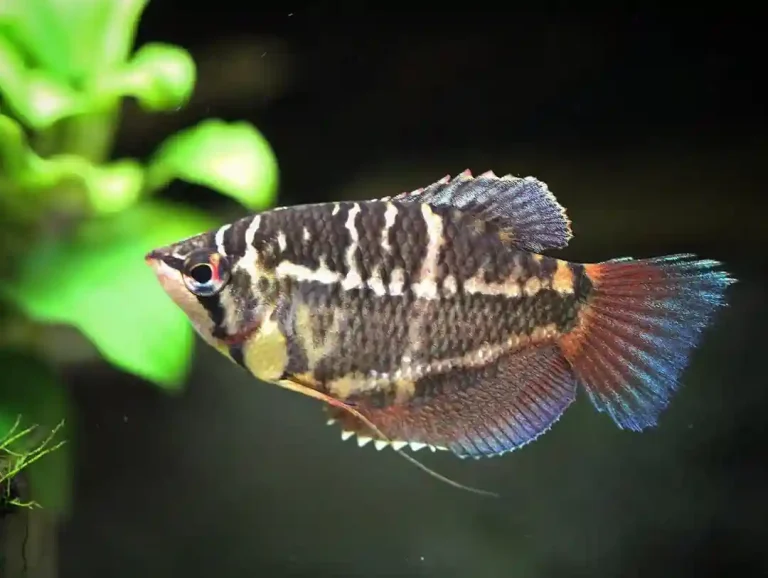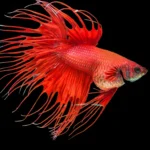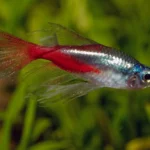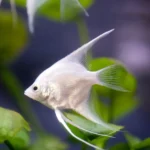The Honey Gourami (Trichogaster chuna) is a peaceful, beginner-friendly fish loved for its soft yellow-to-orange coloring and gentle nature. They’re ideal for calm community aquariums and thrive in planted setups with low flow. In this guide, we’ll cover everything you need to know to care for Honey Gouramis from their size and diet to tank setup and compatible mates.
What Is a Honey Gourami?
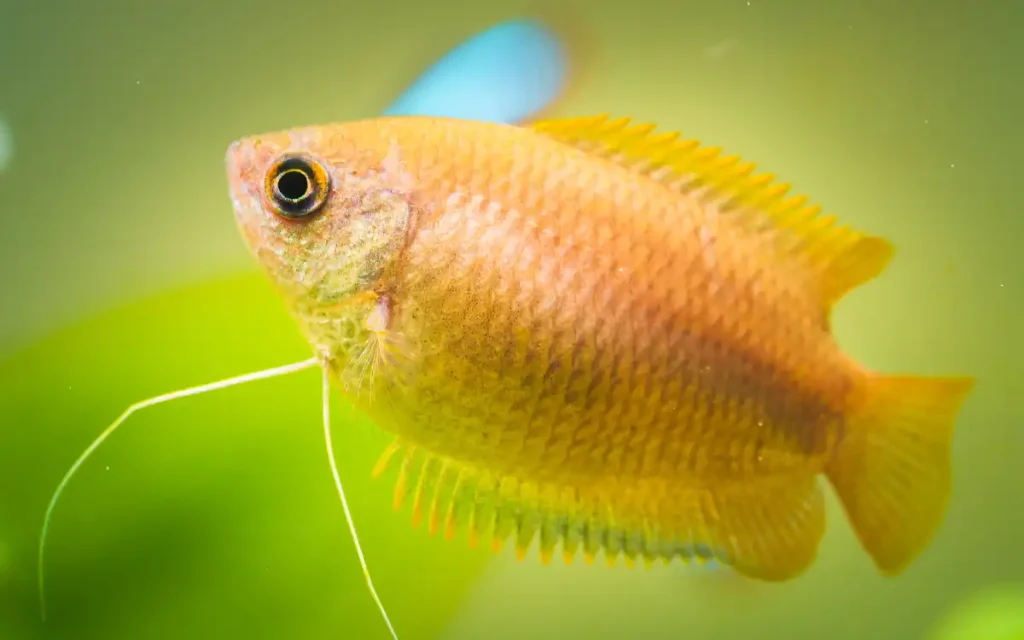
Honey Gouramis are small freshwater fish native to slow-moving rivers and ponds in India and Bangladesh. They typically grow up to 2 inches and are known for their calm behavior and shimmering honey-like coloration — especially in males during breeding season. These fish belong to the Gourami family and are closely related to Dwarf and Sparkling Gouramis but are noticeably gentler.
They breathe using a labyrinth organ, meaning they can survive in lower-oxygen environments for short periods — but they still need clean, well-filtered water.
Quick Profile
| Feature | Details |
| Scientific Name | Trichogaster chuna |
| Size | 1.5–2 inches |
| Lifespan | 4–6 years |
| Tank Size | Minimum 10 gallons |
| Temperature | 72–82°F |
| pH Range | 6.0–7.5 |
| Behavior | Peaceful, shy, social |
Ideal Tank Setup for Honey Gouramis
Honey Gouramis prefer calm waters with plenty of cover. A well-planted tank is key to making them feel safe and helping them show their natural color. Floating plants are especially appreciated as they provide shade and reduce surface agitation.
Recommended Setup:
- Tank Size: 10 gallons for a pair, 20+ gallons for a group
- Plants: Java fern, water wisteria, hornwort, and floating plants
- Substrate: Sand or fine gravel
- Filtration: Sponge filter or gentle HOB filter
- Lighting: Moderate to low (too much light stresses them)
- Decor: Add driftwood, caves, and leaf litter for hiding
Even though they’re hardy, sudden changes in water chemistry can stress them. Stick to slow acclimation and stable water conditions.
Honey Gourami Feeding Guide
These fish aren’t picky eaters but do best on a varied diet. In the wild, they eat small insects, crustaceans, and zooplankton. In captivity, they enjoy both commercial and live/frozen foods.
Best Food Options:
- Micro pellets
- Frozen bloodworms
- Live daphnia or brine shrimp
- Crushed flakes
- Tubifex worms (as a treat)
Feeding Tip: Feed 1–2 times per day in small amounts. They’re slow eaters, so avoid fast-feeding tank mates that might outcompete them.
Tank Mates for Honey Gouramis
Honey Gouramis get along with most peaceful fish, but they can get stressed by aggressive or fast-swimming tank mates. They also do well with other small gouramis if given enough space and cover.
Compatible Tank Mates:
- Ember Tetras
- Harlequin Rasboras
- Pygmy Corydoras
- Otocinclus Catfish
- Celestial Pearl Danios
- Cherry Shrimp (adults)
Avoid housing them with nippy fish like barbs or overly active species like large danios.
Related: Celestial Pearl Danio Care Guide
Behavior and Temperament
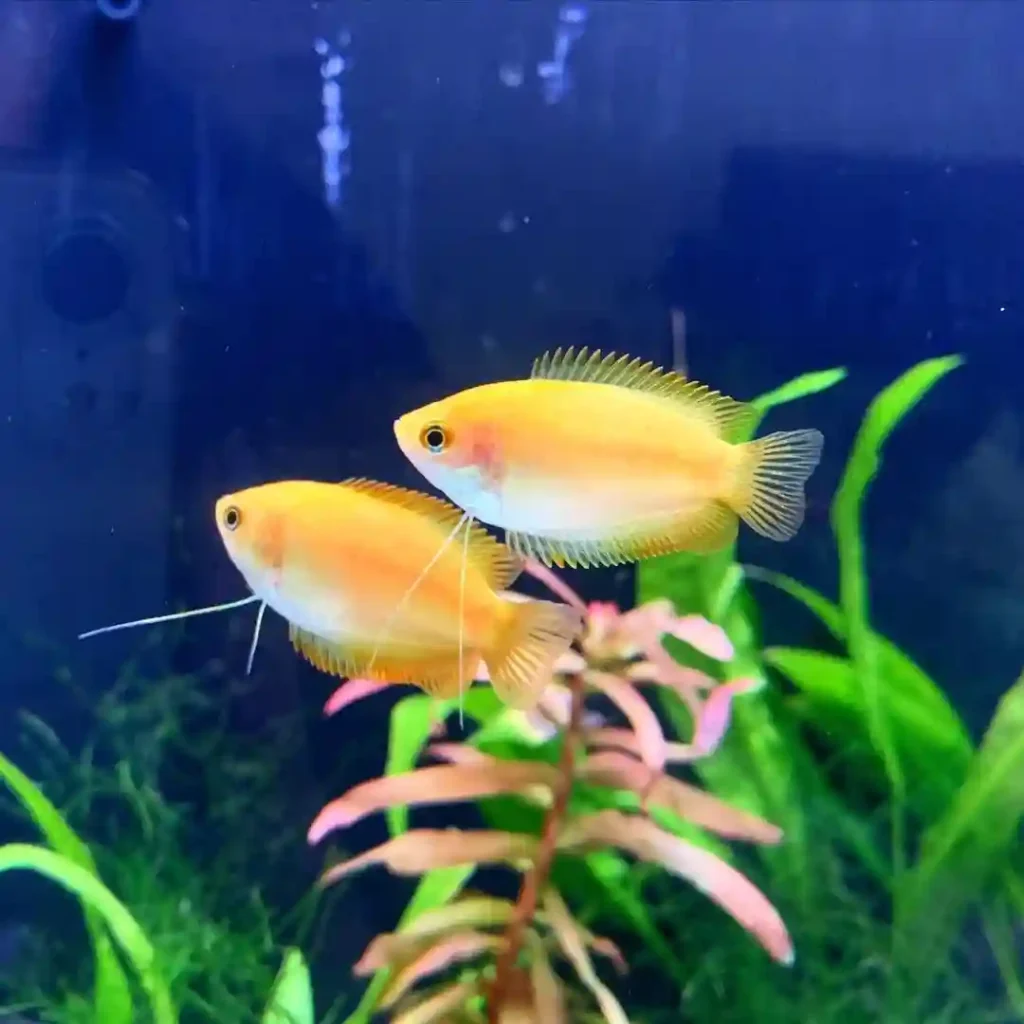
Honey Gouramis are among the most peaceful Gourami species. Males may show slight territorial behavior during breeding, but they rarely cause harm. Most of the time, they quietly explore the tank or hover near plants.
They’re relatively shy and appreciate calm environments. If housed in groups, provide at least one female per male to reduce stress.
Breeding Honey Gouramis
Honey Gouramis are bubble nest builders, meaning the male will create a nest at the surface using bubbles and plant matter.
To encourage breeding:
- Raise the water temperature to 78–80°F
- Lower the water level slightly
- Add floating plants like Salvinia or water lettuce
- Feed live or frozen foods for conditioning
Once the male builds the nest and the female lays eggs, he will guard them. Remove the female post-spawning to prevent chasing. Eggs hatch in about 24–36 hours.
Common Health Issues
Honey Gouramis are hardy, but like all fish, they’re prone to illness if water quality is poor or they’re under stress.
Watch for:
- Fin rot
- Ich (white spots)
- Velvet
- Poor appetite (often due to competition or stress)
Maintain good filtration, perform regular water changes, and avoid overcrowding to prevent issues.
FAQs
How many Honey Gouramis should I keep?
They can be kept solo, in pairs, or small groups. Aim for a trio (1 male + 2 females) in a 20-gallon tank.
Do Honey Gouramis need a heater?
Yes, they’re tropical fish and prefer water around 76–80°F.
Can Honey Gouramis live with Betta fish?
Not ideal — while both are labyrinth fish, their temperaments can clash. Better to pair them with peaceful tetras or rasboras.
Are Honey Gouramis good for beginners?
Absolutely. They’re hardy, low-maintenance, and peaceful — just make sure tank mates are not aggressive.

